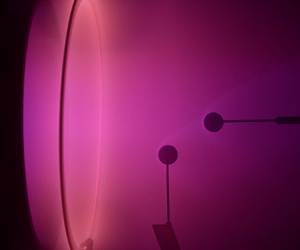No CrossRef data available.
Published online by Cambridge University Press: 20 October 2023

This work presents an experimental investigation focused on the analysis of aerodynamic properties between two interacting spheres in a supersonic rarefied flow. Atmospheric re-entries of space debris, whether natural or man-made, begin at altitude 120 km, and observations of historical re-entries have shown that fragmentation occurs between 90 and 50 km. The resulting fragments interact with each other, altering their own trajectories while traversing the different flow regimes between the free molecular and continuum regimes. This study focuses on the intermediate slip regime, where viscous effects of varying magnitude can influence the nature of the interactions of the shocks and modify them from the already known behaviour in the continuum regime. Specifically, this study examines how two spheres interact with each other upon re-entry into the atmosphere, focusing particularly on the six types of shock/shock interactions identified by Edney. The experiments were performed in the MARHy wind tunnel, in a steady Mach 4 laminar flow with static pressure 2.67 Pa. To highlight the differences between the six types of interferences, a variety of set-ups and devices were used: flow-field visualization, aerodynamic forces (through two diagnoses, aerodynamic balance and the swinging sphere technique) and wall pressure measurements. Results demonstrate the identification of differences according to the type of interference observed, showing in particular the viscous effect of rarefied flows by making a comparison with the continuum regime.